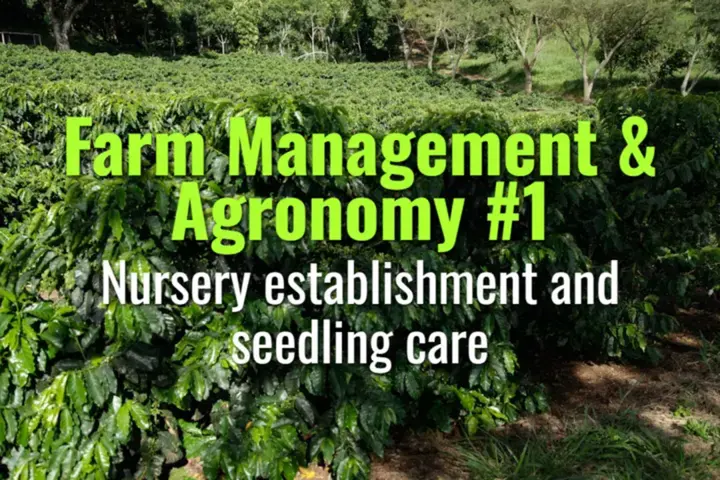Nursery establishment and seedling care
This topic explains how to establish a coffee nursery, select and germinate seeds, and care for seedlings before field planting to ensure strong, productive coffee trees.
- Coffee Basics Nerds
- 2 min read
Article 1 of 12 in Farm Management & Agronomy/

Importance of Nurseries
- Nurseries provide a controlled environment for seed germination and early growth.
- Strong seedlings improve survival rates, yield potential, and disease resistance.
Steps in Nursery Establishment
1. Site Selection
- Choose a location with good drainage, easy access to water, and partial shade.
- Close to the main farm for easier transport.
2. Seed Selection & Preparation
- Select seeds from ripe, healthy cherries of true-to-type mother plants.
- Use only disease-free, well-formed seeds.
- Float test: discard seeds that float (usually weak or empty).
3. Germination Beds
- Beds filled with fertile, well-drained soil mixed with sand and organic matter.
- Seeds planted horizontally, ~1.5 cm deep, covered with mulch to retain moisture.
- Watered regularly to keep soil moist but not waterlogged.
- Germination occurs in 6–8 weeks.
4. Transplanting to Polybags
- Once seedlings reach the “matchstick stage” (2–3 cm tall, two small leaves), transplant into polybags filled with fertile soil.
- Bag mixture: topsoil, sand, compost/manure (balanced ratio).
- Ensure proper root placement to avoid deformities.
Seedling Care
- Shade management: Provide 50% shade using shade nets, banana leaves, or agroforestry trees.
- Watering: Daily in dry seasons, reduced during rains.
- Weeding: Remove weeds from bags to reduce competition.
- Fertilization: Light applications of compost or diluted liquid fertilizers as seedlings grow.
- Pest/disease monitoring: Check for leaf miners, damping-off, or fungal infections.
Hardening Off
- Before transplanting to the field, seedlings must be “hardened” for 2–4 weeks.
- Gradually reduce shade and watering to prepare them for harsher field conditions.
- Target transplanting age: 6–8 months old (30–40 cm height, 5–6 pairs of leaves).
Lasting Importance
A well-managed nursery ensures healthy, vigorous seedlings, reducing field mortality and giving farmers a strong foundation for productive coffee farming. Proper care in the first months translates into better yields, quality, and resilience over the tree’s lifespan.